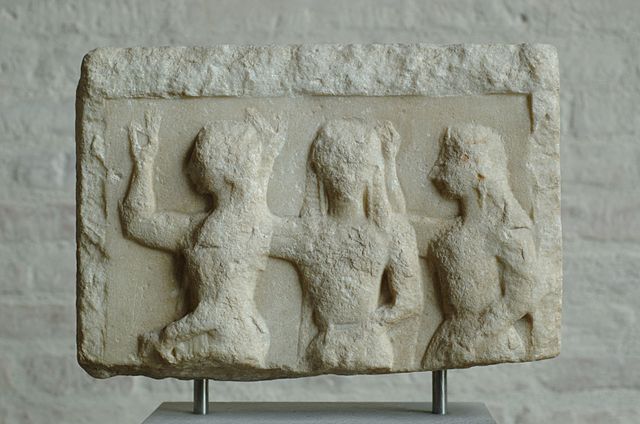In Greek mythology, the Horae, Horai or Hours were the goddesses of the seasons and the natural portions of time.
Dionysus leading the Horae (Neo-Attic Roman relief, 1st century)
A detail of Horae Serenae by Edward Poynter (1894)
Marble reliefs of two Horae, Acropolis Museum, Athens.
An allegory of the peace and happiness of the state; depicted are Dike (justice), Eunomia (order) and, in the center, Eirene (peace).The painting is by Jacob Jordaens
In Greek mythology, the Charites, singular Charis, or Graces, were three or more goddesses of charm, beauty, nature, human creativity, goodwill, and fertility. Hesiod names three – Aglaea ("Shining"), Euphrosyne ("Joy"), and Thalia ("Blooming") – and names Aglaea as the youngest and the wife of Hephaestus. In Roman mythology they were known as the Gratiae, the "Graces". Some sources use the appellation "Charis" as the name of one of the Charites, and equate her with Aglaea, as she too is referred to as the wife of Hephaestus.
The Three Graces in a fresco at Pompeii, 1-50 AD
The Three Graces, from Sandro Botticelli's painting Primavera in the Uffizi Gallery.
6th-century BCE relief
The Three Graces, Antonio Canova's first version, now in the Hermitage Museum








